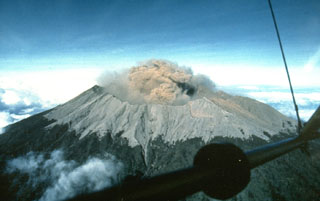Report on Raung (Indonesia) — 25 November-1 December 2020
Smithsonian Institution / US Geological Survey
Weekly Volcanic Activity Report, 25 November-1 December 2020
Managing Editor: Sally Sennert.
Please cite this report as:
Global Volcanism Program, 2020. Report on Raung (Indonesia) (Sennert, S, ed.). Weekly Volcanic Activity Report, 25 November-1 December 2020. Smithsonian Institution and US Geological Survey.
Raung
Indonesia
8.119°S, 114.056°E; summit elev. 3260 m
All times are local (unless otherwise noted)
PVMBG reported that during 1-3 October dense gray plumes rose 50-300 m above Raung’s summit; neither eruptions nor gas emissions were visible afterwards, through 26 November. Seismicity decreased and deflation was recorded. The Alert Level was lowered to 1 (on a scale of 1-4) on 27 November, and the public was warned to stay away from the summer crater.
Geological Summary. Raung, one of Java's most active volcanoes, is a massive stratovolcano in easternmost Java that was constructed SW of the rim of Ijen caldera. The unvegetated summit is truncated by a dramatic steep-walled, 2-km-wide caldera that has been the site of frequent historical eruptions. A prehistoric collapse of Gunung Gadung on the W flank produced a large debris avalanche that traveled 79 km, reaching nearly to the Indian Ocean. Raung contains several centers constructed along a NE-SW line, with Gunung Suket and Gunung Gadung stratovolcanoes being located to the NE and W, respectively.
Source: Pusat Vulkanologi dan Mitigasi Bencana Geologi (PVMBG, also known as CVGHM)

